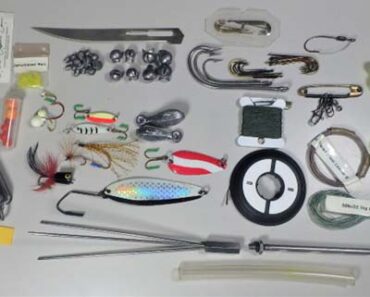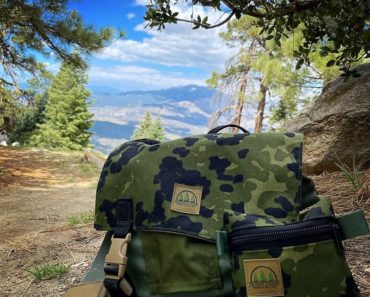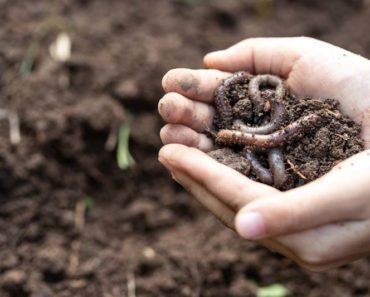Since a young age, I’ve learned that growing my own vegetables is an incredibly satisfying pursuit enjoyed by many. It’s not only therapeutic but also brings immense joy from sowing, tending, reaping, and relishing the fruits of your labor. This practice has deep roots in rural families, especially in mine, connecting us to the pioneering spirit of our ancestors.
However, most people believe that gardening is limited to those with sprawling plots of land in the countryside. That’s a false assumption, and in fact, gardening can be adapted to nearly any available space, whether you have a large rural property or a tiny urban apartment. For some folks out there, they don’t even need a backyard to keep a successful garden going.
Earn Your Food Independence NOW!
The beauty of today’s gardening options is that they cater to a wide range of individuals. Whether you reside in a spacious rural area or a cozy city apartment with just a small patio or even a modest windowsill, you can still cultivate your green thumb. Even if you have no outdoor space at all, some communities offer alternative solutions. The satisfaction of growing and harvesting, even on a small scale, far surpasses not growing anything at all.
Gardening on a large scale
When we think of gardening, our minds often conjure up images of the classic, traditional garden from our childhood – a patch of earth, varying in size, adorned with an array of plants neatly arranged in rows. These mental pictures can differ greatly from person to person, shaped by individual experiences and exposure to gardening. Yet, the traditional garden remains the most prevalent, even though its size varies significantly.
The garden’s size is a crucial factor that shouldn’t be underestimated. Space constraints often limit the garden’s dimensions. In such cases, gardeners may find themselves unable to cultivate their desired crops.
On the flip side, there are those fortunate enough to have ample gardening space, but they must exercise caution not to take on more than they can handle. Gardening demands a substantial investment of time and effort, so embarking on a garden too vast to be properly tended can lead to disappointing results and potentially dampen future gardening aspirations.
The term “mini-farm” has gained popularity among preppers, especially those embracing a pioneer spirit and a self-sufficient lifestyle, yet its definition is quite relative. To some of us, a mini-farm may involve growing fruits and vegetables, and/or raising animals on parcels ranging from half an acre to several acres. For others, it might mean cultivating a backyard garden, growing wine grapes, tending to chickens for meat and eggs, or engaging in greenhouse gardening.
Saving space when gardening
I spent most of my younger years in the city, living in a house with a rather small yard. Our backyard was nothing more than a narrow strip squeezed between the back of our house and the chain-link fence surrounding our property. But my father was determined to have a garden despite the limited space.
Every year, he would meticulously hand-till a plot along the fence, stretching some 20 to 25 feet. In this tight space, he planted tomatoes, bell peppers, green onions, and occasionally other veggies. To support the growing tomatoes, he used various threads to tie them to the fence and to tobacco stakes, those wooden shafts used to transport cut tobacco from the fields to the barn and ultimately to market.
I always helped my dad with his garden, and as I grew older, my interest in expanding our gardening efforts grew as well. I discovered two unused corners on the side of the house and transformed each into small garden plots.
Additionally, I ventured into the world of container gardening, cultivating vegetables in small plastic tubs and flower pots. Even now, as an adult living in a rural area with plenty of gardening space, I occasionally supplement my traditional garden with container plants, especially when growing herbs.
Container gardening has become a hit among those with limited space. Flower pots and plastic plant containers aren’t just for pretty flowers. In fact, numerous vegetables can thrive in them. Many garden stores now offer tomatoes and other plants in pots equipped with built-in trellises to support the plants as they grow.
The range of plants that do well in containers is extensive, but their success depends on climate and the care they receive. Containers don’t retain moisture like actual ground, so it’s crucial to ensure they receive adequate water. A container without proper drainage can hold excess water, potentially harming the plants. Most container plants require daily attention to keep them in peak condition.
Containers are a fantastic solution for those with limited or no space for traditional ground gardening. They can be placed on patios or porches, and some plants even flourish indoors on a windowsill. You’ll find that many homes have a full herb garden growing right in the kitchen window. Not only do these herbs provide fresh flavors for cooking, but the fragrance of growing and freshly cut herbs offers a unique kind of aromatherapy.
Don’t hesitate to experiment with container gardening. A few years back, I purchased several large plastic tubs, drilled drainage holes, and filled them with loose, loamy soil. Then, I planted potatoes and successfully harvested them without the need for digging.
While the yield wasn’t as bountiful as planting in the ground, it required far less effort. Not everything will go according to plan, but learning and gaining experience are all part of the fun and offer ideas for improvements in the following year.
For those who prefer not to till the ground or lack that option, raised beds can be a great alternative. Raised beds are often seen in urban and suburban settings, where a traditional tilled garden might seem out of place. These raised beds are not only practical but also visually appealing in the neighborhood, blending in seamlessly with other landscaping.
Typically, raised beds are constructed by forming a square or rectangular wooden frame, though sometimes concrete or rocks are used. The frame is then filled with soil for planting vegetables. Some gardeners even incorporate a trellis into the raised bed for vining plants or those that require additional support.
Not to mention that using raised beds can save you from a life of back pain and make gardening a more enjoyable activity. Raised beds are especially useful for the elderly or those dealing with a physical disability.
Getting involved in a community garden
If you find yourself stuck in the city with limited space and few gardening options, don’t despair – there are solutions worth exploring. With the recent increase in food prices, community gardens are cropping up in many urban areas, and it might be well worth your while to get involved. And if you can’t find one locally, perhaps it’s time to take the initiative and start one yourself.
Community gardens come in various shapes and sizes, often sponsored by organizations. In some cases, the sponsoring entity may be a church or a club, and the garden space is reserved for its members. In other instances, a community garden may truly be open to residents within a specific geographic area. Regardless of the setup, communal gardening can offer both advantages and challenges.
The clear advantage is that it enables people with limited space and opportunities to cultivate plants they might not otherwise have the chance to grow. However, communal gardening can sometimes lead to disputes over space, pilfering of harvest from others’ plots, subpar care of the plants, and more.
Community gardens may grant individual gardeners their designated areas to manage independently, or the entire garden might be a collective effort with shared responsibilities and harvest shares. The latter can be less desirable due to potential conflicts.
I personally recommend steering clear of shared spaces where the entire garden is a group project. The age-old adage that “10 percent of the people do 90 percent of the work” is likely to become a reality rather quickly, leading to dysfunction, resentment, and disagreements.
It’s essential to understand that it’s not always a matter of laziness or irresponsibility; often, people may not comprehend the time and commitment required for gardening, health issues could limit their ability to contribute, or their work or home situation may change, leaving them with insufficient time. It’s far less likely to be problematic if each individual or family is responsible for their own designated gardening space.
Giving Permaculture a try
Another term that has been gaining significant popularity, with its original meaning being adapted to suit the current times, is Permaculture. This is a subject of such depth and breadth that it’s challenging to provide a comprehensive overview in this limited space. Much like mini-farming, the definition of Permaculture can vary greatly from one person to another, reflecting individual interpretations and applications.
Permaculture, often described as a branch of ecological design, ecological engineering, and environmental design, is a holistic approach to creating sustainable architecture, regenerative and self-maintained habitats, and agricultural systems inspired by natural ecosystems.
In simpler terms, Permaculture involves taking available space, carefully assessing it to optimize resource utilization and irrigation, and then planting in a methodical manner that mimics natural growth conditions. This approach not only utilizes water runoff but also incorporates companion planting and other innovative strategies.
What sets Permaculture apart is its emphasis on designing systems that are not only environmentally friendly but also regenerative and self-sustaining. It focuses on creating landscapes that provide a variety of benefits, such as food production, improved soil quality, water conservation, and enhanced biodiversity. Permaculture principles can be applied to urban, suburban, and rural settings, making it a versatile approach to sustainable living.
Permaculture practitioners often work with nature rather than against it, striving to create ecosystems that thrive without the need for constant intervention. This approach encourages thoughtful and efficient land use while promoting harmony with the environment. In essence, Permaculture is a dynamic and evolving discipline that seeks to harness the wisdom of nature to build resilient and productive systems.
New and innovative ways to garden
In recent years, gardening has evolved far beyond traditional practices. As our living spaces shrink and the need for sustainable, efficient food production grows, alternative methods of gardening have gained popularity. Here are the three groundbreaking approaches gaining popularity: aquaponics, aeroponics, and hydroponics, each offering unique solutions for gardening in small and enclosed spaces.
Aquaponics: A Harmony of Fish and Plants
Aquaponics is a sustainable and resource-efficient gardening method that combines aquaculture (fish farming) with hydroponics. This innovative system is a closed-loop ecosystem where fish and plants coexist to the benefit of both. The concept is simple: fish waste, which is rich in nutrients, is converted by beneficial bacteria into a form that can be readily absorbed by plants. The plants, in turn, act as a natural filter for the water, ensuring a healthy environment for the fish.
In a small enclosed space, aquaponics offers several advantages. Firstly, it requires minimal soil or no soil at all, making it suitable for urban dwellers with limited outdoor areas. The water in the system is recirculated, reducing the need for excessive water use.
This method is highly adaptable, allowing you to grow a wide variety of vegetables and herbs, all while enjoying a continuous supply of fresh fish. Aquaponics is not only an efficient way to grow food but also a fascinating and educational experience for gardeners of all ages.
Aeroponics: Growing in the Air
Aeroponics takes gardening to new heights, quite literally. In this method, plants are suspended in a growing chamber, and their roots are continuously misted with a nutrient-rich water solution. This process allows plants to access the necessary nutrients and oxygen directly, without the need for soil. The absence of soil eliminates the risk of soil-borne diseases and pests, making it a clean and efficient gardening method.
Aeroponics is exceptionally well-suited for enclosed spaces, as it requires minimal room and can be used in vertical farming setups. The controlled environment helps maximize growth rates and yields, making it ideal for those looking to grow crops in a confined area.
This method is particularly effective for growing leafy greens, herbs, and even small fruiting plants like strawberries. The efficient use of space and resources makes aeroponics an excellent choice for modern, space-conscious gardeners.
Hydroponics: Soilless and Space-Efficient
Hydroponics is another soilless gardening method that focuses on delivering nutrients directly to the plant’s roots through a water-based solution. The absence of soil allows for precise control over the plant’s nutrient intake and eliminates soil-related issues. With hydroponics, you can grow a wide range of crops, from leafy greens to larger vegetables and even fruit-bearing plants like tomatoes and peppers.
For those with limited outdoor space or seeking year-round cultivation, hydroponics offers a compact and versatile solution. Various hydroponic systems, such as nutrient film technique (NFT) and deep water culture (DWC), are designed to fit small spaces and can be adapted to indoor gardening setups.
By utilizing vertical towers, shelves, or wall-mounted units, gardeners can maximize their growing area in confined spaces. Hydroponics is known for its efficiency, rapid growth rates, and reduced water consumption, making it an excellent choice for urban gardeners or anyone seeking a highly productive gardening method.
These innovative gardening methods, including aquaponics, aeroponics, and hydroponics, offer exciting alternatives for those gardening in small or enclosed spaces. Each method provides unique benefits, allowing you to cultivate a wide variety of crops efficiently while conserving resources and space.
Whether you choose to integrate fish into your garden, grow your plants in the air, or nurture them without soil, these approaches represent the future of sustainable and space-conscious gardening.
Time to get to work
By this point, I hope that reading this has sparked your interest and you’re eager to embark on your gardening journey. With spring coming in a few months, now is the perfect moment to lay the groundwork for the upcoming planting season.
Don’t let limited space discourage you. Whether you’re envisioning a sprawling garden in a spacious yard, a modest setup in your backyard, or even just a couple of containers, remember that gardening offers immense satisfaction and rewards that far outweigh the effort invested.



![Camping Survival – Everything You Need In Your Camping Kit [PODCAST] Camping Survival – Everything You Need In Your Camping Kit [PODCAST]](https://survivalcove.com/wp-content/uploads/2021/09/the-practical-prepper-podcast-banner-370x297.jpg)























